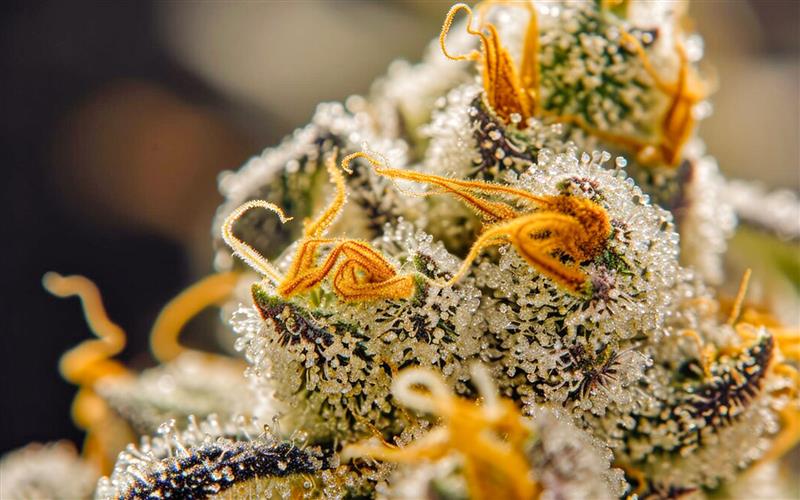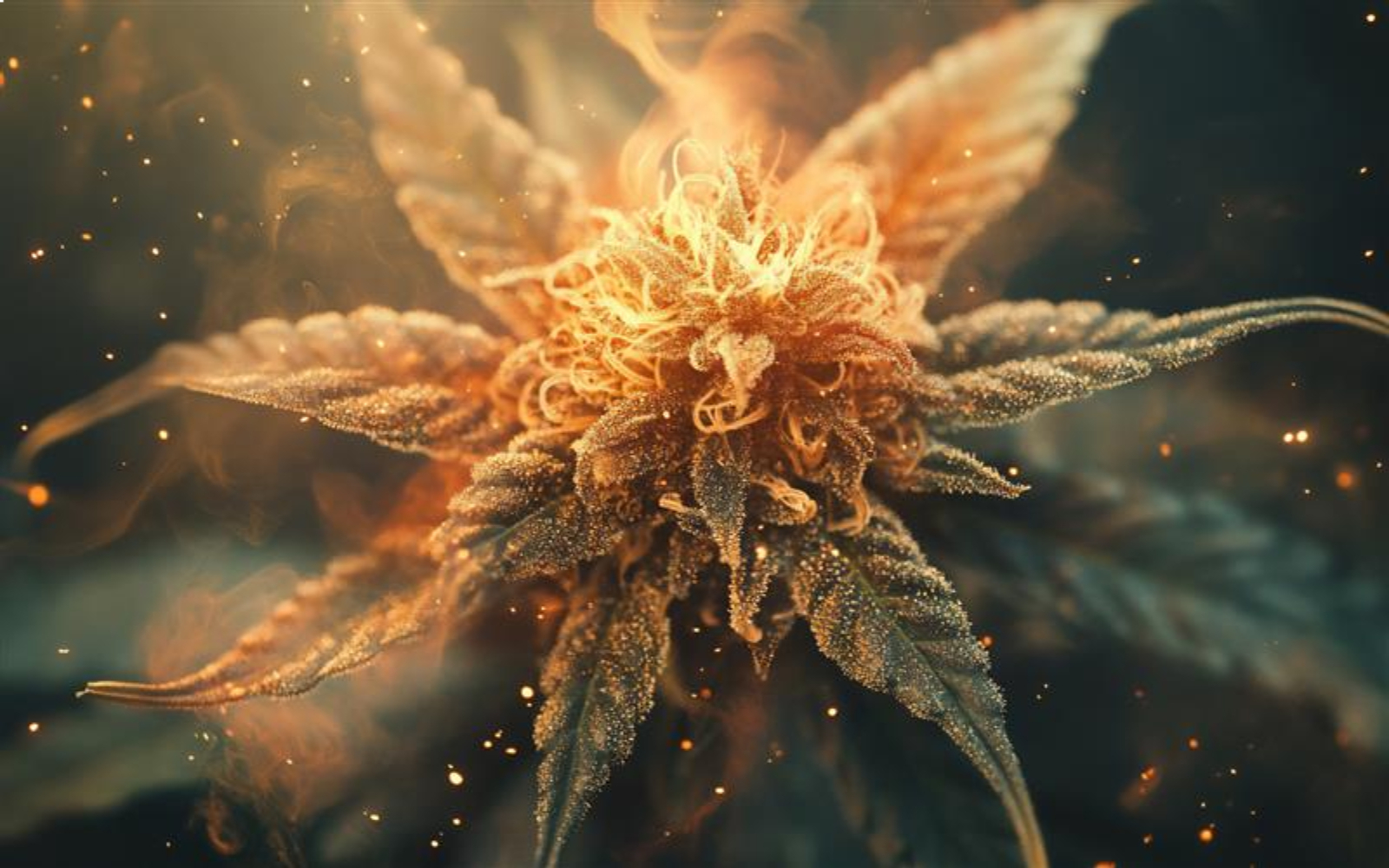Cannabis culture has changed dramatically in recent years. The emphasis is no more only on THC (tetrahydrocannabinol) or CBD (cannabidiol). Terpenes are a recently discovered family of naturally occurring molecules that are drawing interest. These aromatic compounds are altering how consumers view cannabis in terms of flavor, scent, and general experience as well as potency.
The interesting world of terpenes-what they are, how they function, why they matter-and how they are altering the cannabis scene is examined in this blog post.
What are Terpenes?
Terpenes are organic compounds found in many plants, including fruits, herbs, and flowers. They’re best known for giving plants their distinctive aromas and flavors. For example, the refreshing scent of pine trees comes from the terpene pinene, while the calming fragrance of lavender comes from linalool.
In cannabis, terpenes are produced in the same glands as cannabinoids (like THC and CBD) and play a crucial role in shaping each strain’s unique sensory profile. There are over 100 different terpenes in cannabis, and each strain has its own unique blend.
A Historical Perspective
Although terpenes are just now becoming popular among cannabis consumers, they’ve been part of the plant’s natural chemistry for millennia. Historically, cannabis was bred mainly for THC levels. But as science has evolved, so has our understanding of how various compounds interact. Today, growers and scientists recognize that terpenes do much more than add flavor-they can actually influence the effects of cannabis.
Why Terpenes Matter
- Aroma and Flavor
The first thing you notice about cannabis is often its smell-whether it’s citrusy, earthy, spicy, or sweet. This scent is driven by the dominant terpenes in the strain.
For example:
- Myrcene gives off a musky, earthy aroma and is commonly found in indica strains.
- Limonene adds a zesty, citrus smell.
- Caryophyllene smells spicy, like black pepper.
Understanding the terpene profile helps users predict how a strain will taste and smell, enhancing the sensory experience.
- Therapeutic Effects
Beyond their scent and flavor, many terpenes offer therapeutic benefits. While research is still ongoing, some studies and anecdotal evidence suggest that terpenes can:
- Reduce anxiety and stress (e.g., linalool)
- Improve mood (e.g., limonene)
- Act as anti-inflammatories (e.g., caryophyllene)
- Promote relaxation and sleep (e.g., myrcene)
This opens the door to more tailored cannabis experiences, especially for medical users.
- The Entourage Effect
One of the most exciting aspects of terpenes is their role in the entourage effect-the idea that cannabinoids and terpenes work better together than in isolation. This synergy means that THC may feel different depending on the terpene mix, potentially altering the high from energizing to relaxing.
For example, two strains with the same THC content can produce different experiences because of their terpene profiles.
Popular Terpenes in Cannabis
Here’s a breakdown of some of the most common terpenes found in cannabis, along with their scent, effects, and where else they are found:
1. Myrcene
- Aroma/Flavor: Earthy, musky, herbal
- Potential Effects: Sedative, muscle relaxant, promotes sleep
- Also Found In: Mango, hops, thyme, lemongrass
2. Limonene
- Aroma/Flavor: Citrus, lemon, fresh
- Potential Effects: Mood-enhancing, anti-anxiety, stress relief
- Also Found In: Citrus fruits (lemons, oranges), peppermint, rosemary
3. Linalool
- Aroma/Flavor: Floral, lavender, sweet
- Potential Effects: Calming, anti-anxiety, antidepressant
- Also Found In: Lavender, coriander, birch trees
4. Pinene
- Aroma/Flavor: Pine, herbal, fresh
- Potential Effects: Alertness, anti-inflammatory, improves memory
- Also Found In: Pine needles, rosemary, basil, dill
5. Caryophyllene
- Aroma/Flavor: Spicy, peppery, woody
- Potential Effects: Anti-inflammatory, pain relief, gastroprotective
- Also Found In: Black pepper, cloves, cinnamon, hops
6. Terpinolene
- Aroma/Flavor: Fruity, floral, herbal
- Potential Effects: Uplifting, antioxidant, antibacterial
- Also Found In: Apples, lilacs, nutmeg, cumin
7. Humulene
- Aroma/Flavor: Earthy, woody, spicy
- Potential Effects: Appetite suppressant, anti-inflammatory
- Also Found In: Hops, coriander, cloves
Terpenes and Strain Selection
For consumers, especially those using cannabis medicinally, terpene knowledge can be incredibly useful.
How to Choose a Strain Based on Terpenes
- Need to relax or sleep? Look for strains high in myrcene or linalool.
- Feeling anxious or stressed? Try something with limonene.
- Looking for energy or focus? Pinene and terpinolene might be better choices.
- Chronic pain or inflammation? Consider caryophyllene or humulene.
Instead of relying on the outdated indica/sativa classification, terpene profiles offer a more accurate guide to the effects a strain might have.
How to Read a Terpene Profile
As more dispensaries and brands become terpene-savvy, product labels often list dominant terpenes along with THC and CBD content. These profiles are usually measured in percentages or parts per million (ppm).
A product might list:
- THC: 20%
- CBD: 1%
- Terpenes: Myrcene (0.8%), Limonene (0.4%), Caryophyllene (0.3%)
This data helps you make informed choices about your experience.
Terpenes in Concentrates and Edibles
Terpenes are sensitive to heat and processing. In high-temperature cannabis extractions, they can be lost or degraded, which is why some concentrates may lack the aromatic punch of flower.
To combat this, some manufacturers reintroduce terpenes (either cannabis-derived or botanically derived) into products like:
- Vape cartridges
- Tinctures
- Edibles
This not only improves flavor but also enhances the effects by preserving the entourage effect.
Tips for storage:
- Use airtight containers to keep air and moisture out, preserving flavor and potency.
- Store in a cool, dark place to prevent light and heat from degrading cannabinoids and terpenes.
- Avoid plastic bags; opt for glass jars to better preserve your cannabis.
- Keep away from humidity; excess moisture can encourage mold growth and ruin your product.
- Store in a stable environment; avoid areas with fluctuating temperatures or direct sunlight.
The Future of Terpenes
As cannabis legalization spreads and scientific research grows, terpenes are poised to play a central role in the future of cannabis.
Some possible trends:
- Terpene-forward branding: Products marketed by flavor and effect profiles, not just strain names.
- Custom terpene blends: For tailored effects like “focus,” “calm,” or “energy.”
- Medical formulations: Using terpenes to enhance therapeutic outcomes in areas like pain, anxiety, or sleep disorders.
More than just buzzwords, terpenes are helping shift cannabis from a one-size-fits-all model to a personalized wellness experience.
Conclusion
The rise of terpenes represents a deeper, more nuanced understanding of cannabis. As more people learn about these powerful compounds, the way we choose, consume, and benefit from cannabis will continue to evolve.
Whether you’re a seasoned user or new to cannabis, paying attention to terpene profiles can help you unlock a more flavorful, effective, and enjoyable experience.
So next time you pick up a new strain or product, don’t just ask about THC-ask about the terpenes.








